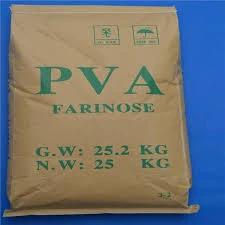HPMC for Tile Adhesives Enhancing Performance and Durability
Hydroxypropyl Methylcellulose (HPMC) is a widely used additive in the production of tile adhesives, renowned for its versatile properties and ability to significantly enhance the performance of these construction materials. The incorporation of HPMC not only improves the workability of tile adhesives but also contributes to their overall durability and functionality, making it a critical component in modern tiling applications.
HPMC for Tile Adhesives Enhancing Performance and Durability
HPMC also significantly impacts the open time of tile adhesives. Open time refers to the period during which the adhesive remains workable after application. With the inclusion of HPMC, the open time can be extended, allowing installers more flexibility during the tiling process. This is especially important in larger projects where tiles need to be repositioned or adjusted for alignment. The improved open time helps in achieving better adhesion, ensuring that the tiles adhere properly without the risk of premature setting, which can lead to tiles becoming loose or dislodged over time.
hpmc for tile

Another essential benefit of HPMC is its water retention capability. Adequate moisture retention is vital for the curing process of tile adhesives, as it prevents premature drying and allows for better bonding with the substrate. HPMC effectively retains water within the adhesive mixture, facilitating a more robust and durable bond between the tile and the surface. This water retention not only improves initial adhesion but also contributes to the long-term stability of the tiled surface, reducing the likelihood of problems such as cracking or peeling that can arise from inadequate moisture during the curing process.
Moreover, HPMC contributes to the workability and application properties of tile adhesives, allowing for smoother application and better bonding characteristics. Its influence on the rheological properties of the adhesive ensures that it can be easily spread over various substrates, including porous and non-porous surfaces. This adaptability makes HPMC an ideal choice for a wide range of tiling projects, whether for residential, commercial, or industrial applications.
In addition to its performance benefits, HPMC is a non-toxic and environmentally friendly additive, making it suitable for indoor applications where air quality is a concern. It is free from solvents and harmful chemicals, aligning with the growing demand for sustainable building materials that do not compromise health or safety.
In summary, the use of Hydroxypropyl Methylcellulose (HPMC) in tile adhesives is a game-changer in the construction industry. Its ability to enhance viscosity, extend open time, retain moisture, and improve overall workability makes it an indispensable additive for ensuring durable and high-performing tiled surfaces. As the construction sector continues to evolve towards more efficient and sustainable practices, HPMC will undoubtedly remain a key ingredient in the formulation of tile adhesives, paving the way for better building standards and improved installation techniques. Whether for simple home renovations or extensive commercial projects, the benefits of HPMC are clear, proving that innovation in materials science is essential for future advancement in construction.
-
A Comprehensive Guide to Methyl Ethyl Hydroxyethyl Cellulose: Applications and Industry InsightsNewsNov.24,2025
-
Understanding Methyl 2 Hydroxyethyl Cellulose: Uses, Benefits & Industry InsightsNewsNov.24,2025
-
Hydroxyethyl Methyl Cellulose HEMC: Industrial Uses, Benefits & Future TrendsNewsNov.23,2025
-
HEMC Cellulose: Versatile & Sustainable Industrial Polymer | YoungcelNewsNov.23,2025
-
Methyl Hydroxyethyl Cellulose: Versatile Building Block for Industry & SustainabilityNewsNov.23,2025
-
CAS 9032 42 2: Understanding Polyvinyl Alcohol's Impact on Industry & SustainabilityNewsNov.22,2025




